Carlos Torres
Support Vector Machine Application for Multiphase Flow Pattern Prediction
Jun 12, 2018



Abstract:In this paper a data analytical approach featuring support vector machines (SVM) is employed to train a predictive model over an experimentaldataset, which consists of the most relevant studies for two-phase flow pattern prediction. The database for this study consists of flow patterns or flow regimes in gas-liquid two-phase flow. The term flow pattern refers to the geometrical configuration of the gas and liquid phases in the pipe. When gas and liquid flow simultaneously in a pipe, the two phases can distribute themselves in a variety of flow configurations. Gas-liquid two-phase flow occurs ubiquitously in various major industrial fields: petroleum, chemical, nuclear, and geothermal industries. The flow configurations differ from each other in the spatial distribution of the interface, resulting in different flow characteristics. Experimental results obtained by applying the presented methodology to different combinations of flow patterns demonstrate that the proposed approach is state-of-the-art alternatives by achieving 97% correct classification. The results suggest machine learning could be used as an effective tool for automatic detection and classification of gas-liquid flow patterns.
Summarization of ICU Patient Motion from Multimodal Multiview Videos
Jun 28, 2017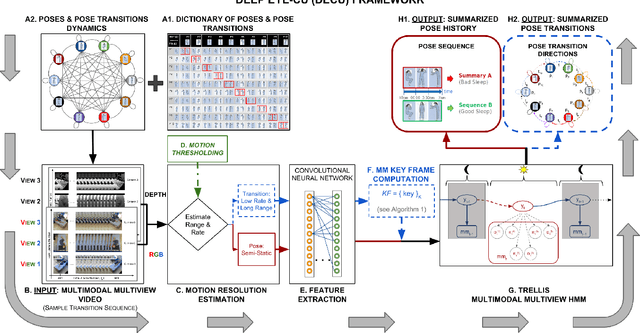
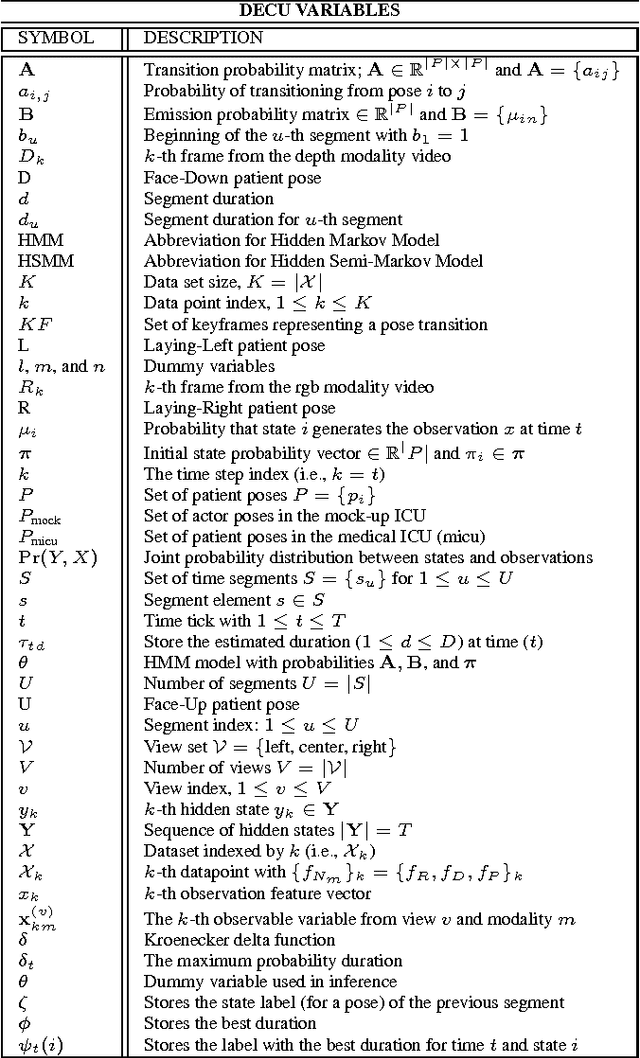
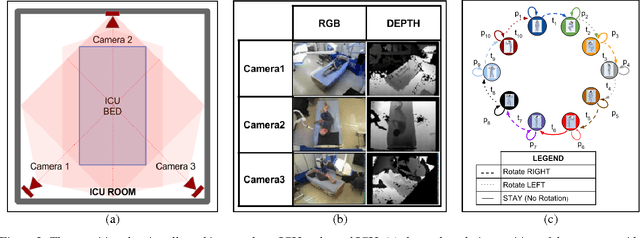
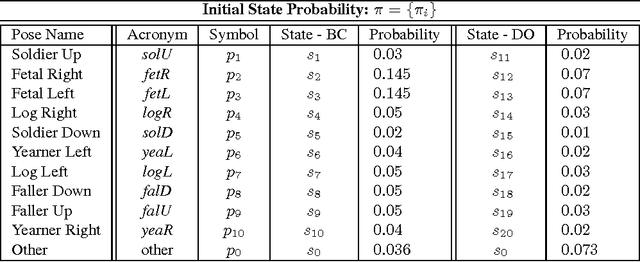
Abstract:Clinical observations indicate that during critical care at the hospitals, patients sleep positioning and motion affect recovery. Unfortunately, there is no formal medical protocol to record, quantify, and analyze patient motion. There is a small number of clinical studies, which use manual analysis of sleep poses and motion recordings to support medical benefits of patient positioning and motion monitoring. Manual processes are not scalable, are prone to human errors, and strain an already taxed healthcare workforce. This study introduces DECU (Deep Eye-CU): an autonomous mulitmodal multiview system, which addresses these issues by autonomously monitoring healthcare environments and enabling the recording and analysis of patient sleep poses and motion. DECU uses three RGB-D cameras to monitor patient motion in a medical Intensive Care Unit (ICU). The algorithms in DECU estimate pose direction at different temporal resolutions and use keyframes to efficiently represent pose transition dynamics. DECU combines deep features computed from the data with a modified version of Hidden Markov Model to more flexibly model sleep pose duration, analyze pose patterns, and summarize patient motion. Extensive experimental results are presented. The performance of DECU is evaluated in ideal (BC: Bright and Clear/occlusion-free) and natural (DO: Dark and Occluded) scenarios at two motion resolutions in a mock-up and a real ICU. The results indicate that deep features allow DECU to match the classification performance of engineered features in BC scenes and increase the accuracy by up to 8% in DO scenes. In addition, the overall pose history summarization tracing accuracy shows an average detection rate of 85% in BC and of 76% in DO scenes. The proposed keyframe estimation algorithm allows DECU to reach an average 78% transition classification accuracy.
Deep Learning as a Tool to Predict Flow Patterns in Two-Phase Flow
May 19, 2017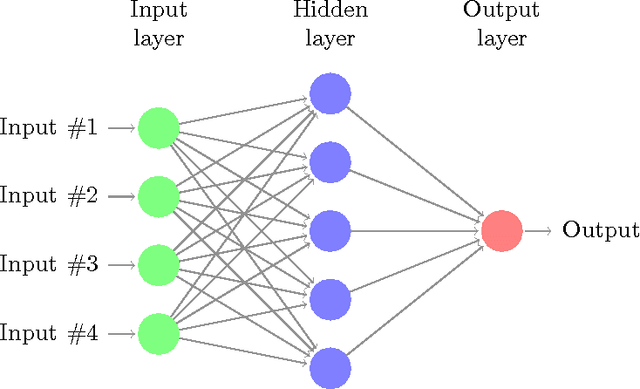
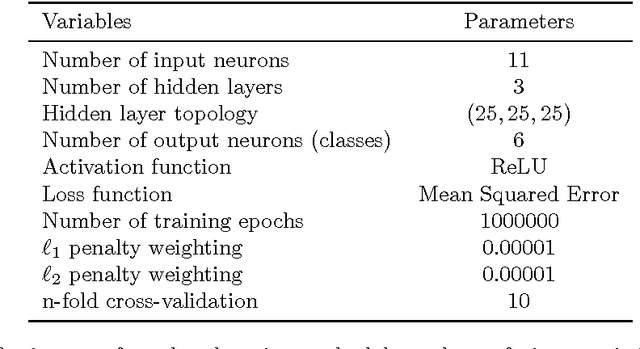


Abstract:In order to better model complex real-world data such as multiphase flow, one approach is to develop pattern recognition techniques and robust features that capture the relevant information. In this paper, we use deep learning methods, and in particular employ the multilayer perceptron, to build an algorithm that can predict flow pattern in twophase flow from fluid properties and pipe conditions. The preliminary results show excellent performance when compared with classical methods of flow pattern prediction.
Eye-CU: Sleep Pose Classification for Healthcare using Multimodal Multiview Data
Feb 22, 2016



Abstract:Manual analysis of body poses of bed-ridden patients requires staff to continuously track and record patient poses. Two limitations in the dissemination of pose-related therapies are scarce human resources and unreliable automated systems. This work addresses these issues by introducing a new method and a new system for robust automated classification of sleep poses in an Intensive Care Unit (ICU) environment. The new method, coupled-constrained Least-Squares (cc-LS), uses multimodal and multiview (MM) data and finds the set of modality trust values that minimizes the difference between expected and estimated labels. The new system, Eye-CU, is an affordable multi-sensor modular system for unobtrusive data collection and analysis in healthcare. Experimental results indicate that the performance of cc-LS matches the performance of existing methods in ideal scenarios. This method outperforms the latest techniques in challenging scenarios by 13% for those with poor illumination and by 70% for those with both poor illumination and occlusions. Results also show that a reduced Eye-CU configuration can classify poses without pressure information with only a slight drop in its performance.
 Add to Chrome
Add to Chrome Add to Firefox
Add to Firefox Add to Edge
Add to Edge